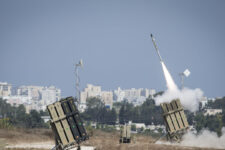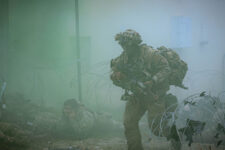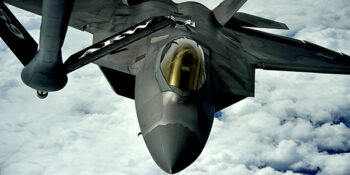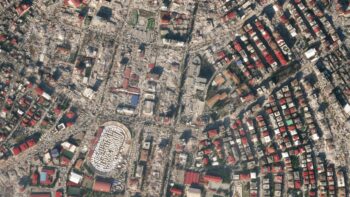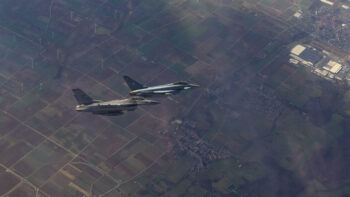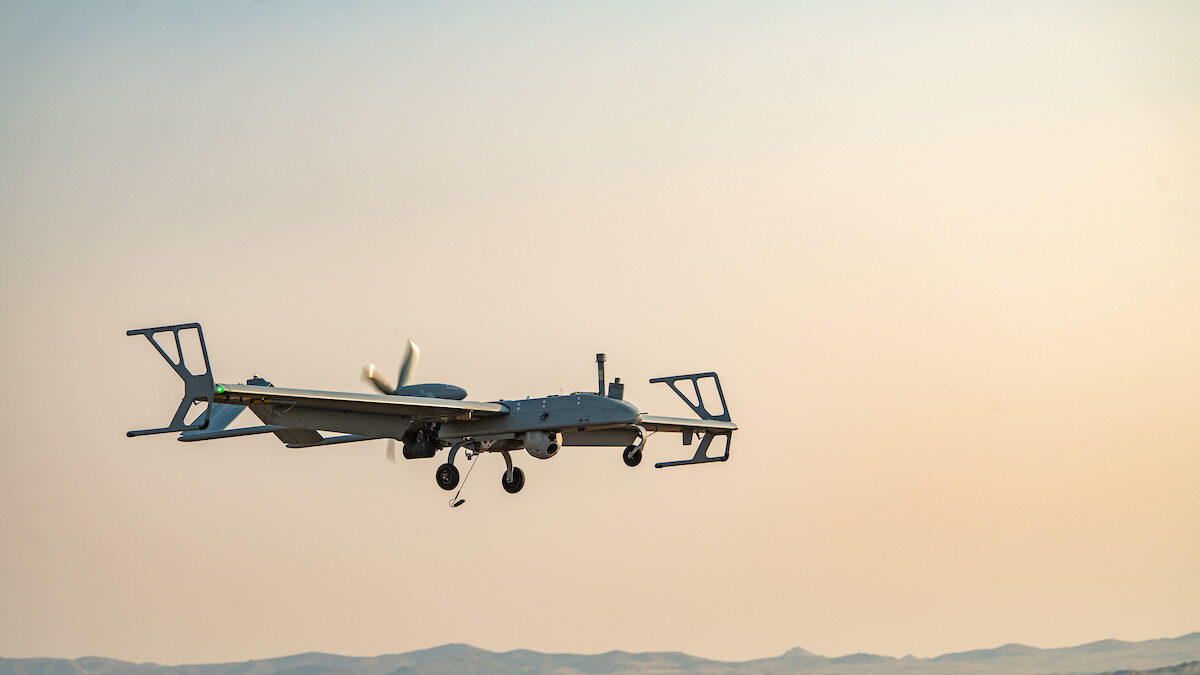
Textron’s Shadow RQ-7B V2 Block III (Photo courtesy of Textron)
AUSA 2024 — The US Army’s decision to shelve its entire RQ-7B Shadow fleet has created a capability gap for soldiers that previously relied on those drones for reconnaissance and surveillance operations. And although the service is eyeing a developmental new platform to get into soldiers’ hands starting in late 2027, that’s simply too long to wait so it’s turning to commercially available options, according to Col. Nick Ryan, the director of the Army Capability Manager for Unmanned Aircraft Systems.
“There’s a gap where our units have no assets and no capability to train with right now, to learn with, to build TTPs [tactics, techniques, and procedures] with,” Ryan told Breaking Defense ahead of this year’s Association of the US Army conference. “We started thinking outside the box about what we can do to help with this.”
Army leaders announced their Shadow divestiture plan in early February as part of a larger aviation shakeup. By the end of September, all of those drones had been removed from units, according to Ryan. The longer-term plan is to field a new Future Tactical Uncrewed Aircraft System (FTUAS) at the brigade level and two companies — Griffon Aerospace and Textron Systems — are currently competing for that coveted contract. If that competition stays on track, the Army is expected to crown a winner later this fiscal year and begin receiving the new drones towards the end of fiscal 2027.
According to Ryan, that plan is a problem for soldiers who need an interim capability now, and emergent operational need statements have been coming in from an array of units including Multi-Domain Task Forces in both the Indo-Pacific and Europe.
Part of the plan forward, at least in part, is to utilize the Defense Innovation Unit’s (DIU’s) Blue UAS List — an initiative designed to help the services more quickly select commercial systems that are fully free of Chinese parts. In theory, if a drone is on the approved list, a unit can buy it.
But when the Army turned to that list earlier this year, none of the drones on it would meet the capability gap created by Shadow’s divestiture, so Ryan and others worked with DIU on plans for the Blue UAS List refresh.
“We probably can’t put something as large as a Shadow on the DIU Blue List, like a Group 3 that weighs a couple thousand pounds, because that would probably be … over $350,000,” Ryan said. Instead, potential options may be in the Group 2 range, weighing in at less than 55 pounds, with the ability to fly for more than four hours at ranges greater than six miles out, see in both day and night conditions, and possibly the ability to laser designate.
“That’s just enough to fill the gap for the time being, to allow units to at least have something to train with, which is better than the nothing they have right now,” Ryan explained.
The service is also eagerly eyeing the addition of first-person view drones for the squad and platoon level, he added.
After DIU put out the Blue List refresh call earlier this year, 360 proposals came in from 220 companies for both platform and supporting tech options, Trent Emeneker, the DIU Blue UAS program manager and contractor, told Breaking Defense during a recent interview.
That list has now been whittled down to 36 flying platforms from approximately 15 vendors, and those capabilities are bound for an early November testing at the Marine Corps’s 29 Palms in Southern California. After the drones take to the air, they will be physically torn apart to inspect all the components, Emeneker explained. And if parts need to be swapped out, the companies will be given that option.
By early December, Emeneker predicts that drones making the final cut will begin appearing on that Blue List and will be continually added on a rolling basis. By the end of February, he added, drones not being picked up by the services will be removed from the list.
“We will list things as soon as we can, we’re not going to have end users wait, we don’t want to also make the companies wait,” Emeneker said.
In the meantime, officials from Army Aviation and Missile Command and Army Combat Capabilities Development Command will be working on securing airworthiness releases so that as soon as suitable drones are officially added to the list, be it a fill in for the Shadow mission or a first-person view drone, the service can make recommendations to units.
“If we can get more systems available that are NDAA-compliant, that the army is actually interested in buying … and Congress provides the funds for the units, then the units will absolutely go there and start buying these things,” Ryan said.


